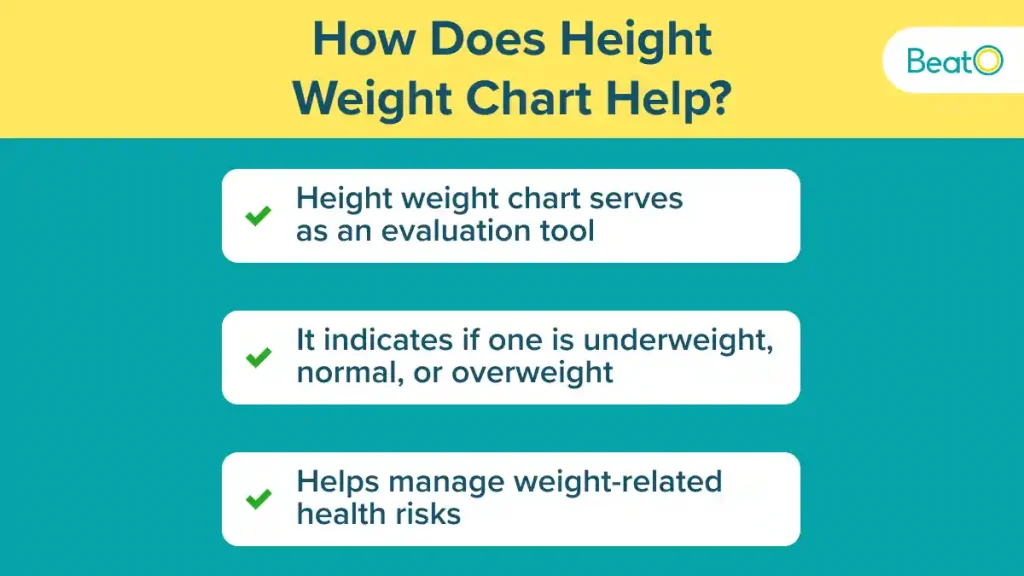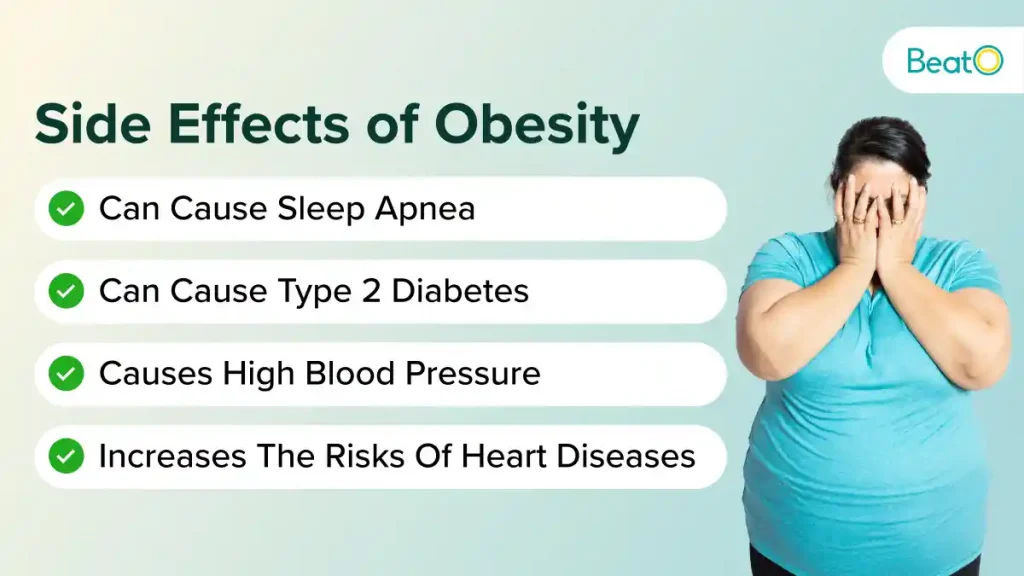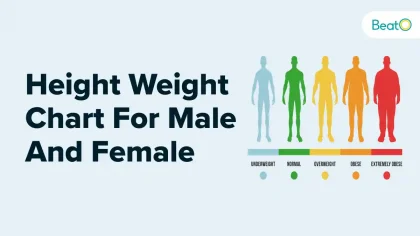In today’s fast-paced world, where health and fitness are paramount concerns, the importance of fitness and health has made it necessary to have an updated and reliable height weight chart reference for each person by age. These graphs provide the road map, helping people to understand the intricate interrelations between their body size and their all-around well-being. With the understanding of the recommended weight ranges respectively based on their heights and ages, individuals can go ahead and make educated decisions on their lifestyle choices and even be proactive towards a healthier tomorrow.

Maintaining a healthy weight is definitely one of the most critical factors for the health of both the mind and the body. The height weight chart is a good tool to assess whether the weight of the person is in the healthy range and proportionate to the height. Nevertheless, age is also an important consideration, as weight ranges considered healthy can change depending on life stages.
This article is going to discuss the height and weight charts according to age for both males and females. Post that it will emphasise the means of balancing and maintaining a healthy lifestyle.
Height Weight Chart For Male And Female
The following table presents the Height Weight Chart for Male and Female across various age groups:
| Age Group | Height (Feet & Inches) | Female Weight Range | Male Weight Range |
| lbs (kg) | lbs (kg) | ||
| 19-24 | 5’0″ | 97-123 (44-56 kg) | 112-138 (51-63 kg) |
| 5’3″ | 107-135 (49-61 kg) | 123-153 (56-69 kg) | |
| 5’6″ | 118-148 (53-67 kg) | 134-169 (61-77 kg) | |
| 5’9″ | 129-162 (59-73 kg) | 146-185 (66-84 kg) | |
| 25-34 | 5’0″ | 101-127 (46-58 kg) | 115-143 (52-65 kg) |
| 5’3″ | 111-141 (50-64 kg) | 127-159 (58-72 kg) | |
| 5’6″ | 122-155 (55-70 kg) | 139-176 (63-80 kg) | |
| 5’9″ | 134-170 (61-77 kg) | 152-193 (69-88 kg) | |
| 35-44 | 5’0″ | 103-131 (47-59 kg) | 119-149 (54-67 kg) |
| 5’3″ | 114-145 (52-66 kg) | 131-165 (59-75 kg) | |
| 5’6″ | 126-160 (57-73 kg) | 144-182 (65-83 kg) | |
| 5’9″ | 138-175 (63-79 kg) | 158-199 (71-90 kg) | |
| 45-54 | 5’0″ | 105-136 (48-62 kg) | 123-154 (56-70 kg) |
| 5’3″ | 117-149 (53-67kg) | 135-171 (61-78 kg) | |
| 5’6″ | 130-164 (59-74 kg) | 148-188 (67-85 kg) | |
| 5’9″ | 142-180 (65-82 kg) | 162-205 (73-93 kg) | |
| 55-64 | 5’0″ | 107-140 (49-64 kg) | 126-160 (57-73 kg) |
| 5’3″ | 119-154 (54-70 kg) | 139-177 (63-80 kg) | |
| 5’6″ | 133-168 (60-76 kg) | 152-195 (69-88 kg) | |
| 5’9″ | 146-184 (66-83 kg) | 166-213 (75-96 kg) | |
| 65+ | 5’0″ | 109-144 (50-65 kg) | 129-166 (59-75 kg) |
| 5’3″ | 121-158 (55-72 kg) | 143-183 (65-83 kg) | |
| 5’6″ | 135-173 (61-78 kg) | 157-201 (71-91 kg) | |
| 5’9″ | 149-189 (68-86 kg) | 172-220 (78-100 kg) |
Here’s the Breakdown of the Height Weight Chart For Male And Female by Age
19-24 Years Old
The physical condition of a person during their late teens and early twenties is usually the best. The height weight chart for male and female of this age group reflects the indicated weight ranges which are considered as the optimal ones for an active and healthy life. Fems of heights 5’0″ to 5’9″ should aim for weights between 44.0 to 73.5 Kg for a woman, and males of the same height should aim between 50.8 Kg to 83.90 kg.
25-34 Years Old
People from the late twenties to early thirties may have an issue with a slow metabolism rate, and the career requirements, together with family responsibilities, can influence the physical activity level. The females with heights ranging between 5’0″ and 5’9″ should target weights of 45 – 77 kg, while it is the males of the same height should aim for weights between 52 to 87 kg.
Also Read: Unique Sources of Protein to Explore on World Protein Day
35-44 Years Old
When the age hits the early thirties, to the early forties, keeping a healthy weight can be harder and harder due to hormonal changes, stress, and a sedentary lifestyle. When it comes to weight classes, females between 5’0″ and 5’9″ should target 46 to 79 kg, while 53 to 90 kg is ideal for males of the same height.
45-54 Years Old
As the years go by, for people who are almost forty-five to fifty-five years old now, the risk of getting age-related health problems like high blood pressure, diabetes and cardiovascular diseases is also increasing. height weight chart in this age category highlights the significance of keeping the weight under control in order to minimize these risks. The weights for women with a height range of 5’0″ – 5’9″ should be targeted for the range of 47 to 81 Kg, whereas for males with the same height, the ideal range would be from 55 to 92 Kg.
55-64 Years Old
In the late fifties and early sixties, muscle loss and a slowing of the metabolism make it harder for individuals to keep up their weight. At this age, the height weight chart shows how important a balanced diet is as well as physical activity. According to the height within the range of 5’0″ to 5’9″, females should lift in the range of 48 to 83 Kg, and males should aim to lift between 57 to 96 Kg.
Also Read: Get Radiant Skin: The Power Of Collagen-Rich Foods
65+ Years Old
With advancing age, people pay more attention to their weight because it is associated with their general health status and quality of life. This age group chart of height and weight is based on the fact that the body composition and metabolism of the person naturally change with time. Females should weigh from 49 to 85 kg for those who are 5’0″ to 5’9″ and boys should have weights in the range of 58 – 99 kg for the same height and stature.
The height and weight chart according to age act as significant guidelines for proper health. By knowing the ideal weight range for your height and age you can make the decisions about your food, exercise, and other aspects of wellness wisely.
How Does Height Weight Chart Help?

The height weight chart will help you identify whether you are underweight, normal or overweight by comparing your height-weight ratio with the chart. It provides information to interpret your health condition based on your category, which can be:
Healthy Weight: The same range represents a healthy weight and lifestyle.
Underweight: If your weight is below the set range, you need to consult a doctor and figure out the ways to gain weight in a healthy mode, including getting a balanced diet and doing exercise.
Overweight: Delving into the specifications beyond the defined range can cause a person to have health issues such as heart disease, high blood pressure, and diabetes. You must keep a check on your diet and fitness level, if needed, to shed the extra weight.
When identified, you can take precautions to control your weight, gain weight or lose weight depending on your status.
Also Read: A Comprehensive Guide On How to Control Diabetes
Tips to Maintain Ideal Weight
Here are some tips to help you maintain an ideal weight:
1. Follow a Healthy Diet.
Eat a balanced diet which includes a lot of fruits, vegetables, whole grains and lean proteins. Eat as little as possible of processed and high-calorie foods.
2. Stay Active
Make routine physical exercise a part of your life, such as brisk walking, swimming or joining a sports club.
3. Get Enough Sleep
Aim for 7-9 hours of quality sleep at night, as inadequate sleep can lead to hormone disruption and weight increase.
4. Manage Stress
Learn some stress-relieving techniques like meditation, yoga or deep breathing exercises, for stress can cause overeating and weight gain.
5. Stay Hydrated
Take in a lot of water and try not to confuse thirst with hunger as your body requires water to function normally.
Also Read: Essential Post Running Stretches Every Runner Needs In Their Routine
How Being Overweight Impacts Health
Being overweight or obese can have several adverse impacts on your health, including:
1. Increased Risk of Chronic Diseases
Conditions including type 2 diabetes, heart disease, stroke, and some types of cancer are more common among people who are overweight.
2. Joint Problems
Carrying excessive weight stresses the joints beyond normal limits, risking osteoarthritis and other conditions related to the joints.
3. Breathing Difficulties
Any excess weight, particularly about the chest and abdomen, may cause shortness of breath and sleep apnea.
4. Mental Health Challenges
Obesity results in an increased risk of depression, anxiety and low self-esteem.
Also Read: Unique Sources of Protein to Explore on World Protein Day
Side Effects of Obesity

Obesity can lead to various health complications, including:
1. High Blood Pressure (Hypertension)
An overweight body can negatively impact the heart and blood vessels by high blood pressure, which is a risk factor.
2. Type 2 Diabetes
One of the main risk factors of obesity is insulin resistance, which in turn leads to type 2 diabetes.
3. Heart Disease
Obesity is the most important factor that causes heart disease like coronary artery disease and heart failure.
4. Stroke
Overweighting is a factor of plaque buildup in the arteries which in turn, raises the chance of stroke.
5. Certain Types of Cancer
The chance of getting breast, colon, endometrial, and other cancers is higher among obese people.
6. Sleep Apnea
The excess weight can result in obstructive sleep apnea, which is the condition where breathing stops and restarts many times during sleep.
Also Read: Ramadan Special: Healthy Recipes for Iftar
Conclusion
In conclusion, height weight charts can be used as a tool for leading a healthy life. You must bear in mind your age and you should try to match your body weight with the recommended range according to the height. Besides a balanced diet, exercise, stress management, and proper sleeping hours, one can stay in shape and have a healthy weight. Obesity and extra weight can result in many complications including high blood pressure, diabetes, heart disease, and some cancers. Using the height and weight chart that is designed with respect to age and making appropriate changes in your lifestyle will help in avoiding health risks and improving your overall wellness.
Disclaimer: The content of this article is compiled information from generic and public sources. It is in no way a substitute, suggestion, or advice for a qualified medical opinion. Always consult a specialist or your own doctor for more information. Beato App does not claim responsibility for this information.
Are you looking for the perfect glucometer to check your blood sugar level? Try out BeatO smartglucometerkit, affordable and easy to use.
Discover top-tier diabetes care with BeatO’s Chief Clinical Officer,Dr. Navneet Agarwal. His expertise in Diabetes ensures personalised guidance for overall health. Try out a smartglucometerand keep track of blood sugar levels now.




